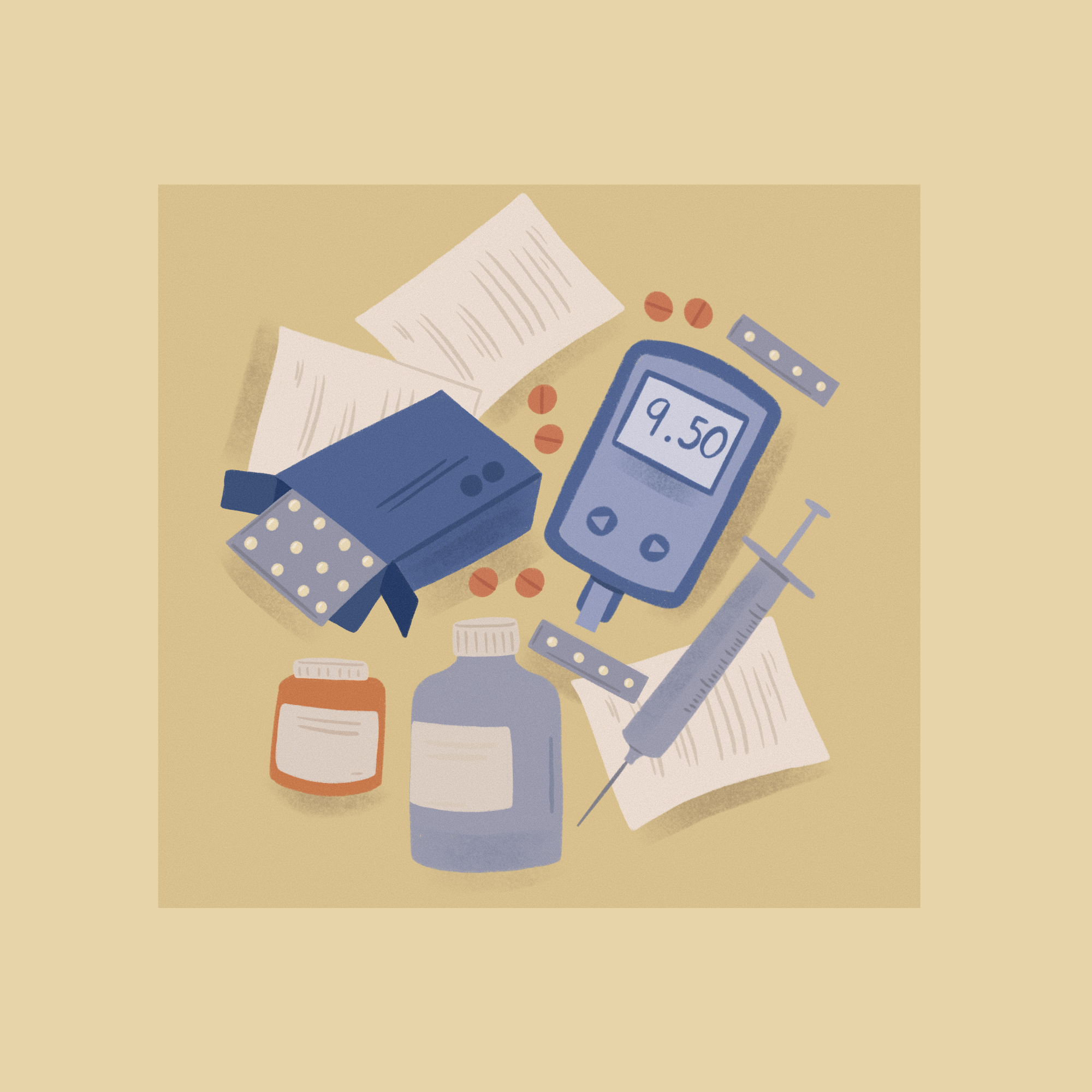Effective communication is often key to the success of businesses and relationships. But do you know that communication is also equally important in managing chronic diseases, including diabetes? On average, as per WHO, 15 million deaths were reported in 2019 due to poor diabetes management. Diabetes diagnosis comes with a lot of stigmas. Additionally, the fear of dealing with the condition for a lifetime and the potential for health and lifestyle deterioration makes disease management complex.
Medications, physical activity, and lifestyle changes are crucial for managing the disease effectively. Inadequate communication is one of the life-threatening contributors to the poor management of the condition. How can we overcome communication barriers and help people with diabetes better understand and care for their condition?
In this blog post, let’s learn about these communication barriers and ways to improve them.
Credits – Lifeology course: “Introduction to Type 2 Diabetes“; Artist: Jennifer Dahbura; Alt-text: Drawing of various diabetes medications and equipment
Communication Barriers
1. Language Differences Between Healthcare Providers and People with Diabetes
Healthcare providers are the first person that people with diabetes encounter at the time of diagnosis. Unfortunately, the communication barrier can begin right from there. While healthcare providers are highly qualified individuals, they come from an academic setting where the use of jargon is common. However, most Americans have a reading level no more than that of a 7th or 8th grader. Understanding terms like HBA1C, pancreas, and insulin resistance is difficult. Moreover, doctors can be so engrossed in completing the checklist of initial tests that they often neglect addressing the patient’s fears and concerns.
Some of these people diagnosed with diabetes might be coming from a background where they have only seen scary diabetes complications such as blindness, and damage to the kidney and the nerves. Hence, the use of jargon makes it difficult for people to understand the cause and effect of diabetes, adding to the patients’ anxiety. The communication gap can lead to trust and respect issues between the patients and their healthcare providers. This is alarming because a person diagnosed with diabetes often needs to feel empowered as they make changes to live with their new condition. After all, how can you trust someone with a language difference?
2. Social Stigma Associated with Diabetes
The social stigma attached to diabetes, including exclusion and blame, are pressors in diabetes management. People with diabetes are often made to believe that their poor dietary habits and laziness have led them to develop diabetes. Furthermore, they are also excluded from the public gathering and parties primarily because they are deemed “low-in energy.”
For example, people with diabetes have admitted to avoiding monitoring glucose levels because of the fear of judgment. They avoid checking their glucose levels to avoid the contempt looks. Society’s judgmental behaviour often leaves patients unwilling to disclose their condition to their peers, leading to high sugar levels and disturbed metabolism. Studies have also reported innumerable cases of people with diabetes experiencing feelings of fear, embarrassment, guilt, and low self-esteem due to society’s pressure.
3. Low Health Literacy of Patients
On top of it, if a patient has low health literacy, this can further fuel the communication gap and diabetes management. Health literacy is the ability of a person to understand and comprehend health information. Low health literacy means people have trouble understanding the information, which can lead to failure in adhering to medication and doctor’s instructions. Research suggests that patients diagnosed with diabetes do not follow the instructions of their healthcare providers when they were not able to comprehend the information from instructional manuals.
Tips To Overcome Communication Barriers
1. Science Communication Training
Because healthcare providers are the ones to break the news to the patients, they must acquire basic science communication training to effectively communicate to and connect with patients with chronic diseases. The training can help them translate the complex body processes in a simpler way that’s understandable to the commoner. Science communication training can also facilitate healthcare providers focus on metaphors and analogies to explain to their patients what diabetes is and the consequences of their lifestyle on high glucose levels.
A lock and key analogy for the insulin-glucose relationship can better explain how insulin is required for the glucose to enter the cells. Insulin is the key for the glucose to open the doors of the cell and enter there to produce energy. During type-2 diabetes, this key is absent, which is why glucose remains floating in the blood vessels and fails to enter the cells.
This will enable people with diabetes to make lifestyle changes to curb their higher and harmful glucose levels.
2. Active listening
Active listening involves understanding the root cause of what a person says and why they say it. It is achieved by providing enough space for your patients to express their concerns and fear. When patients come to you with poor control of their glucose levels, you need to understand what has caused them not to adhere to your initial instructions. This is only possible when they are made enough comfortable in your setting to explain their situation.

Credits: Freepik; Alt-text: Doctor holding hand of the patient
Developing active listening requires practice, but it is achievable. For example, phrases like “You’re not alone” and “I totally understand your situation” or making eye contact with your patients during the conversation can assure them that are being heard. This will build trust between the two parties. As a result, healthcare providers can provide tailored recommendations to patients that can counter their worries and encourage them to follow the suggested regimen.
3. Empathy for Diabetes Communication
Empathy, in dictionary terms, is “the ability to understand and share feelings of one another.” The least we can all do is show kindness. Although educating a person with diabetes about management is important, sometimes words of kindness and encouragement can be a great step in the right direction.

Credit: Freepik; Alt-text: Person comforting another person who seems to be in worry
It may encourage people with diabetes to open up and share more about their condition, helping destigmatize it. Recognize that a person has harder days, and show you are there for them through your actions. Ask if you can help them with anything by approaching them with a positive tone. When doing this, ensure your language and body tone are not contradicting. Having an ear that listens comes in handy in lowering A1C levels and overall stress.
Barriers to effective healthcare delivery and management can result in serious outcomes. The responsibility for successful diabetes management lies on the shoulders of healthcare providers, the patients and everyone around them. However, active listening, health literacy and empathy are the keys to managing diabetes.





